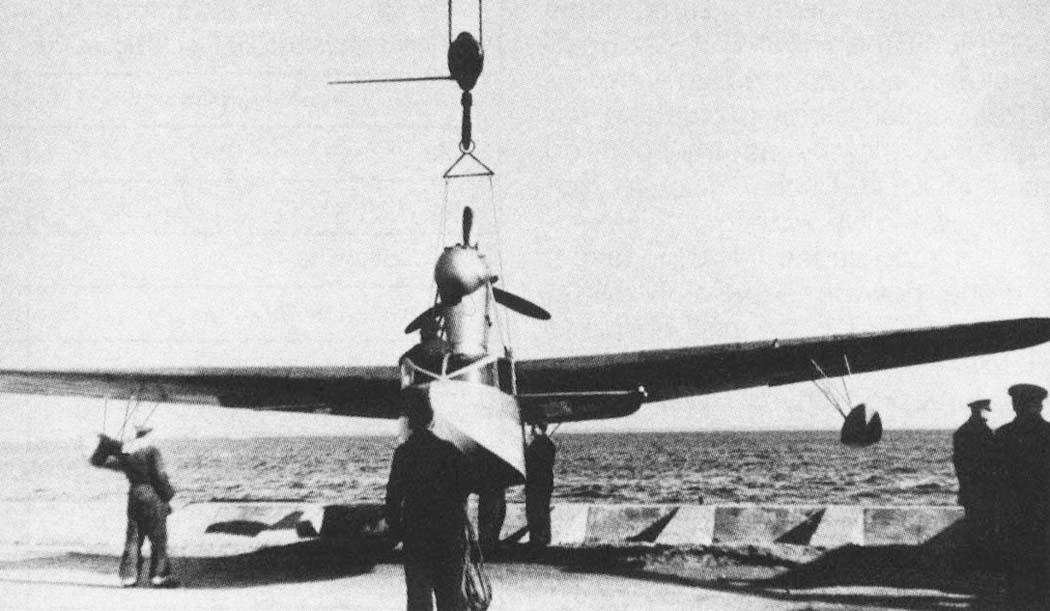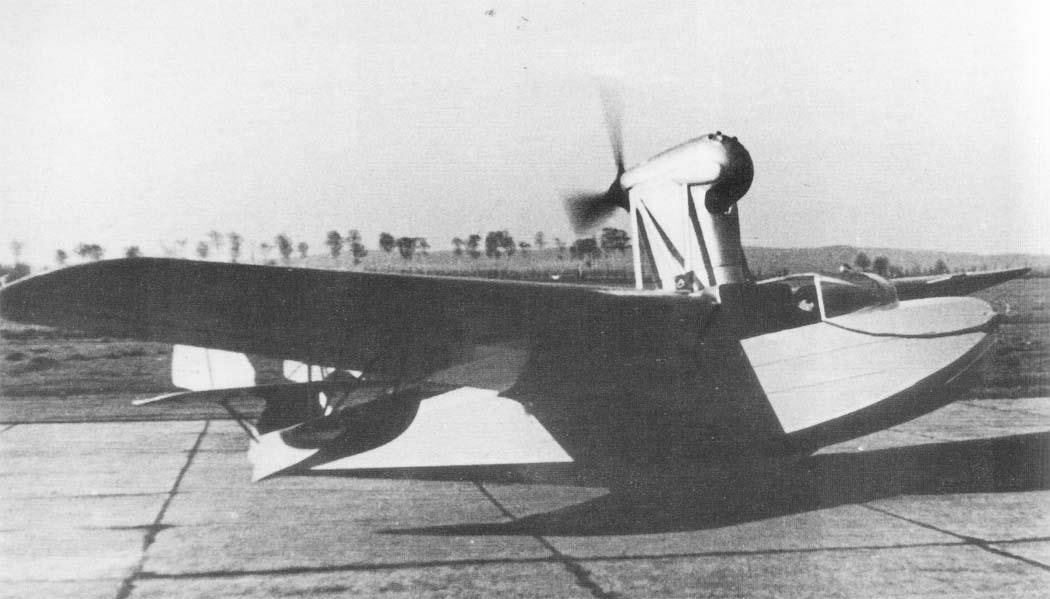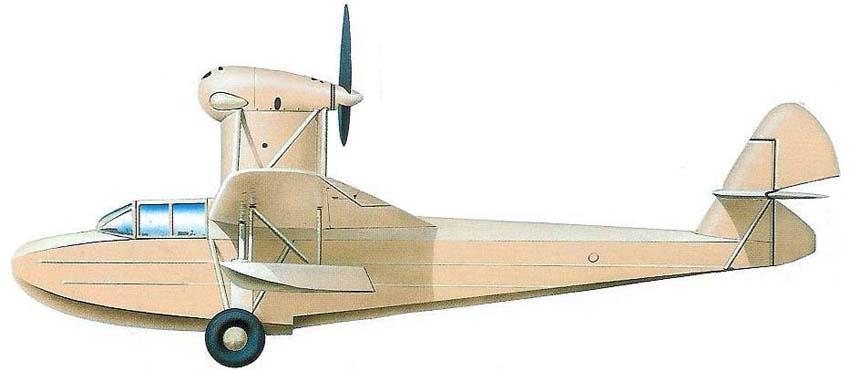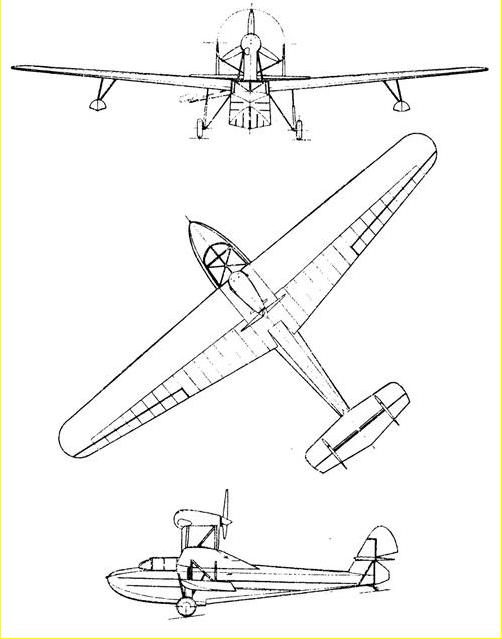| Type |
Two-seat amphibian |
| Engine |
1 de Havilland Gypsy Major with 3-bladed wooden propeller |
| Dimensions |
Length 7,7 m, height 3,1 m, span 12,6 m , wing area 21,5 m2 , |
| Weights |
Empty 630 kg, loaded 950 kg , max. take off weight |
| Performance |
Max.. speed 180 km/h at sea level , cruising speed 120 km/h , stall speed 80 km/h, range 600 km, endurance , service ceiling 3800 m , climb2,4 m/sec. |
| Type |
Werk.Nr |
Registration |
History |
|
|
|
|
The Nikol A-2 had a very long gestation time; its designer, Jerzy Nicol started work on it in May 1929, shortly after his graduation from Warsaw Technical University, but the first flight was made almost ten years later on 4 March 1939. In 1934 the Polish Navy, with an interest in a catapult-launched amphibian for a new warship, contacted Nikol. By the end of 1935 wind tunnel tests had been completed and design calculations approved. Construction of the prototype began in 1936 in the Morski Dyon Lotniczy factory at Puck.
The all-wood, two-seat amphibian had a shoulder mounted cantilever wing built around two spars. Tapered in plan, the wing was plywood covered forward of the rear spar, forming watertight compartments to keep the aircraft afloat after severe hull damage. Behind the rear spar the wing was fabric covered.
The aircraft's wing was trapezoidal with a transverse V equal to 2º. The basis of its power set were two wooden spars. From the leading edge to the rear spar the skin was plywood; from the rear spar to the trailing edge - linen. The wing was divided into several waterproof compartments, which were supposed to keep the car afloat even in the event of severe damage to the fuselage of the flying boat. The wing was attached directly to the boat hull with four bolts.
The side floats had a wooden structure with watertight bulkheads and were connected to the wing using struts made of steel pipes.
The hull of the flying boat had a wooden semi-monocoque structure, one step and plywood sheathing. To increase buoyancy, the boat's hull, which had flat sides, was divided into several waterproof compartments. The cockpit, equipped with a transparent canopy, was located in front of the leading edge of the wing; it featured two side-by-side seats and dual controls. The set of instruments included flight speed and altitude indicators, a compass, a variometer, a tachometer, fuel and oil pressure gauges, an oil temperature indicator, a fuel gauge, and landing gear and stabilizer position indicators. In the bow in front of the cabin there was a compartment for the anchor and mooring equipment. Behind the trailing edge of the wing there was a spacious luggage compartment, closed with a sealed lid.
The tail consisted of a single horizontal and two-finned vertical tail. Adjustable in flight (according to other sources - only on the ground), the stabilizer of a two-spar design was installed on a pylon in the rear part of the fuselage and was reinforced with struts. Two adjustable fins on the ground were attached to the stabilizer. The elevators and rudder were balanced. The fins and stabilizer were covered with plywood; the steering wheels received fabric covering.
The main landing gear had brakes and was equipped with wheels measuring 505x185 mm. The upper ends of the shock absorber struts retracted into the wing, raising the wheels above the water. The chassis was raised manually using a handle, and lowered by its own weight.
The main fuel tank with a capacity of 200 liters was located in the hull behind the cockpit; an additional 35 liter tank was located in the central part of the wing. The oil tank was located above the engine.
The Gipsy Major engine was mounted on a pylon above the wing and drove a three-bladed wooden fixed-pitch pusher propeller. The motor frame was made of steel and duralumin pipes, inside of which fuel lines were laid. The engine was started by a manual starter from an open cockpit. The plane was equipped with a fire extinguisher. Fuel consumption in flight was 30 l/h.
Its first flight was made on 4 March 1939 and many test flights followed which confirmed good air and water handling, suggesting that the A-2 had a future with both naval and civil operators but because of the German invasion of Poland in September 1939 only the prototype flew.[1] Its later history is uncertain: Cynk reports it as destroyed in the invasion but other sources suggest it survived the war, though without flying again. They claim that after the German invasion of Poland and the first unsuccessful air raid on a base in Puck on 1 September 1939, all Polish seaplanes, including the undamaged A-2 prototype, were evacuated from Puck to the naval harbour in Hel. It was slightly damaged due to further air raids, then captured by the Germans and taken to Travemünde for repairs and was later seen at other Polish bases.











